Jenny Rees
Extension Educator York & Seward Counties
Much of the corn in the area is in dough to early dent stages with some at late milk. Southern rust has continued to develop and is highly noticeable in low to mid canopies now, even with fungicide applications. Typically we’d say southern rust occurs on the top side of leaves unless severe, whereas common rust typically occurs on both sides of leaves. On leaves that were flipped over from the July 8 wind storm, I’m seeing southern rust spores (confirmed via microscope) on the undersides of leaves that are now technically facing upward, but not on the ‘normal’ top side of leaf (an interesting observation that a crop consultant asked me about and then I also saw this week to confirm it truly was southern).
Spidermites and aphids are also flaring in fields. Seeing quite a bit of tip back and some ear development abnormalities most likely due to the July 8th wind storm just prior to tasseling. There’s also a number of hybrids with multiple ears on the primary node, but it’s more of a curious thing than most likely anything of detriment.
Soybeans are in various stages of seed fill. Overall, they look pretty good. Sudden death syndrome started to appear this week. Frogeye leaf spot is minor in fields and there are fields with isolated patches of spidermites. Also seeing egg masses and tiny larvae of woolly bear caterpillars and various loopers.

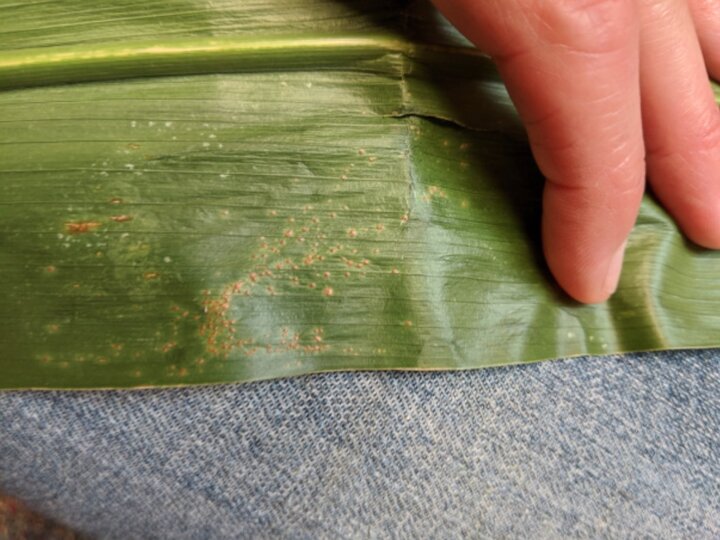
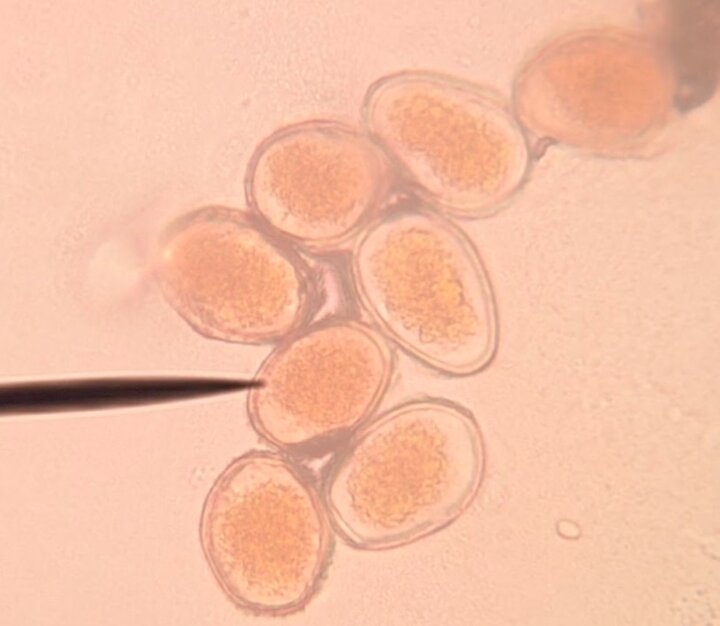
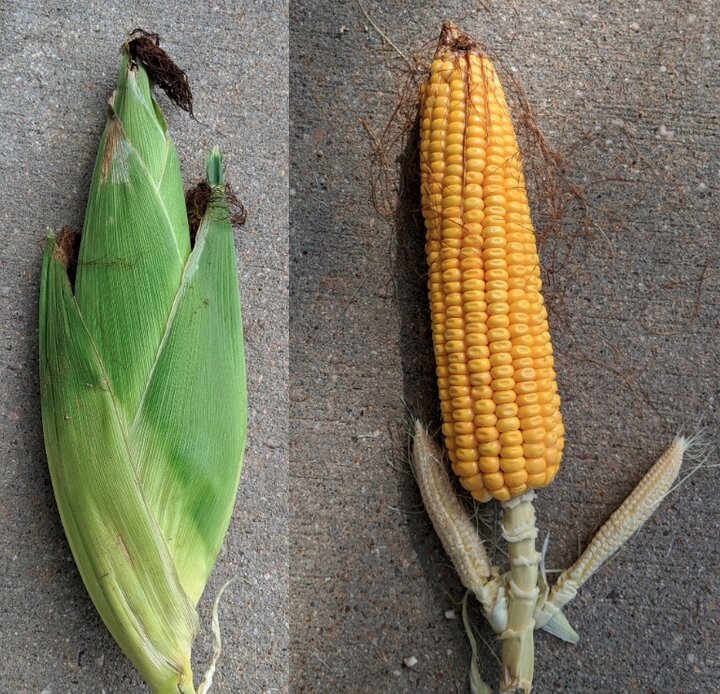
Melissa Bartels
Extension Educator Butler & Polk Counties
Crops are looking good in the area. Little moisture has been received over the last two weeks, those fields with irrigation are utilizing it. Most corn fields in the area range from R3 milk to early R5 dent growth stage. Several diseases can be found while scouting corn fields, gray leaf spot, northern corn blight, bacterial leaf streak, southern rust, common rust and physoderma brown spot.
Many soybean fields are R4 full pod to R5 beginning seed stage. In soybean fields seeing more insect damage than diseases. Japanese beetles can easily be seen with a few thistle caterpillars being spotted while scouting. Soybean gall midge has made its way from the northeast corner of Butler County and now can be found throughout. Soybean gall midge has been confirmed in Polk County in soybeans for the first time as of August 11th, 2020. Two soybean fields were found to be infested but they did not show signs of wilting or death.
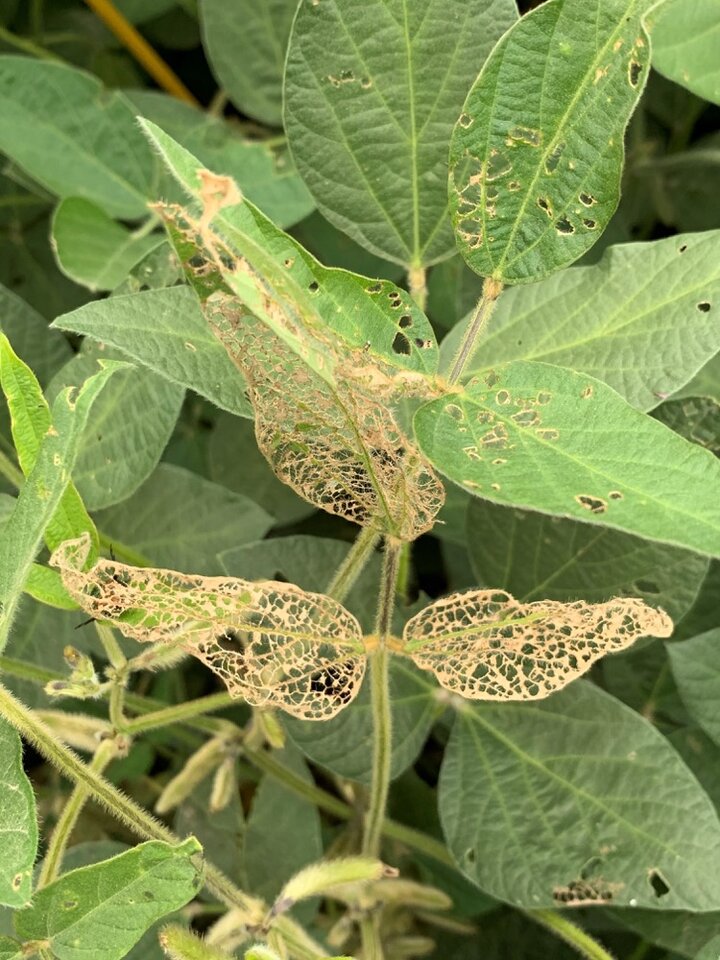
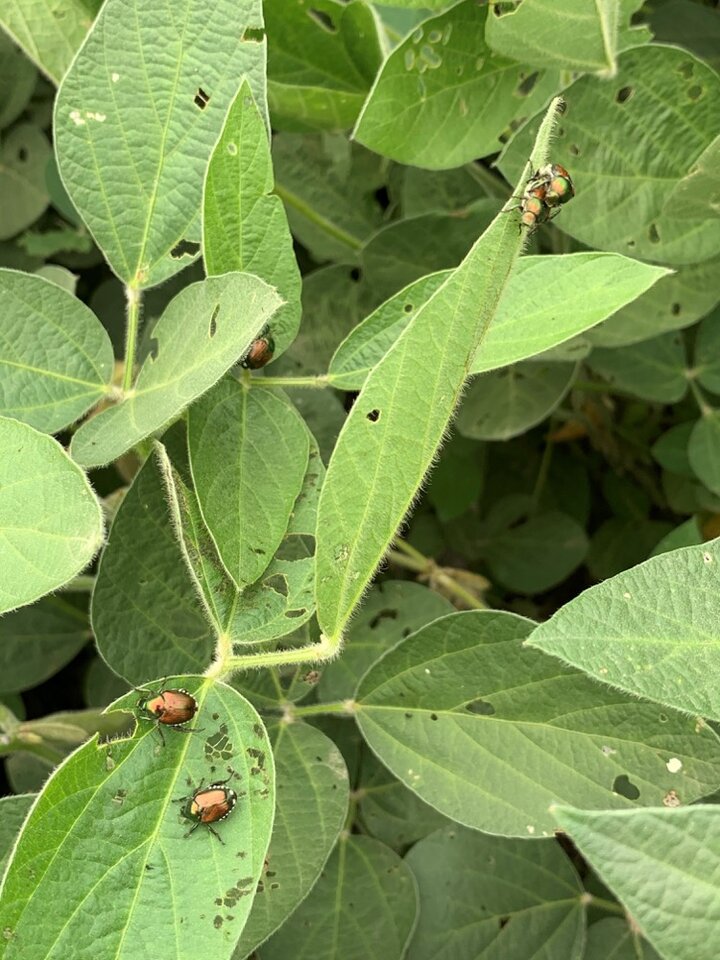
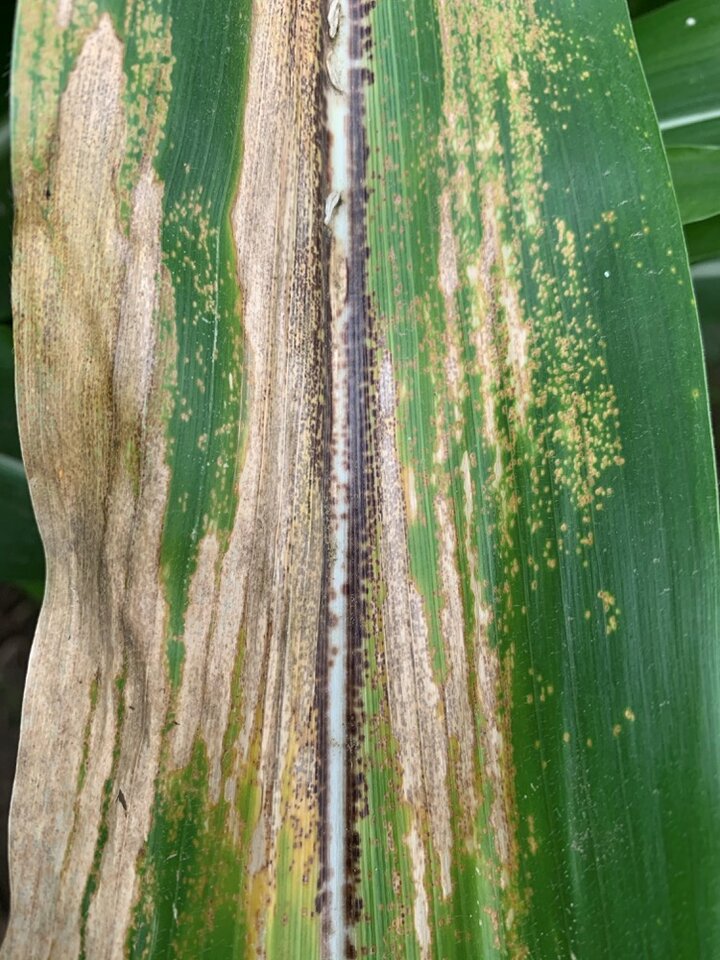

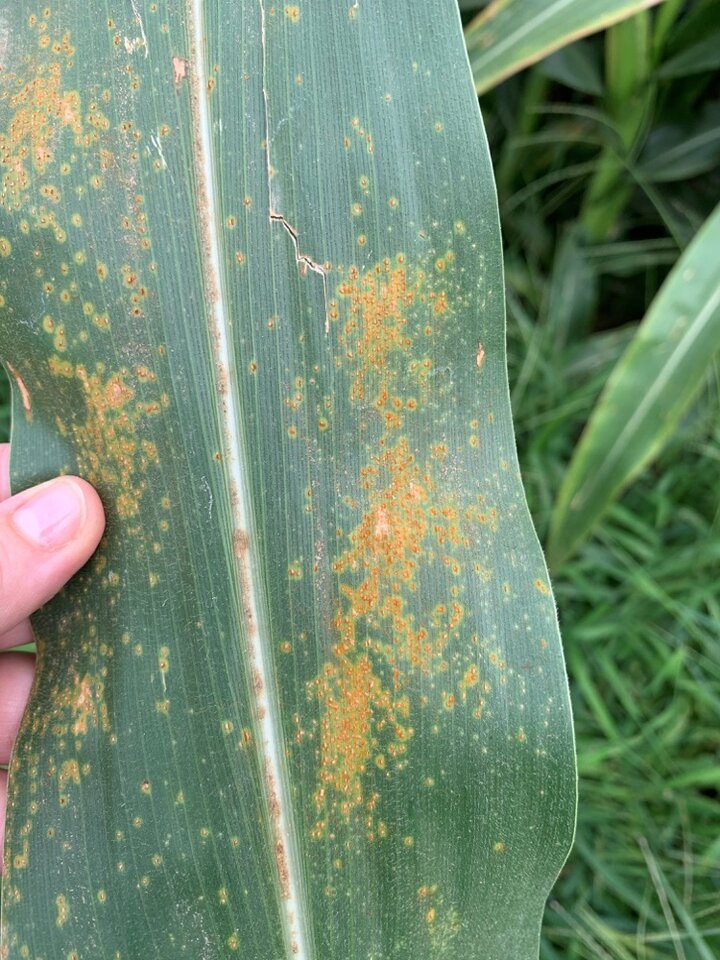
Ron Seymour
Extension Educator Adams County
Corn is in the milk to soft dough stages (R3-R4). Grey leaf spot and bacterial leaf streak were commonly found diseases. Southern rust was found in a couple of fields (Fig. 1). Two spotted spider mites were found in a number of fields with active colonies up to the ear leaf.
Soybeans are in the pod fill (R5-R6) stages. Brown spot was commonly found on lower leaves. Plants affected by sudden death syndrome was also noted. Although leaf defoliation was not excessive, a number of insects such as Japanese beetles, southern corn rootworm beetle, grasshoppers, stink bugs, and green clover worms were common.
Grain sorghum plants are just completing pollination and a few fields are beginning to turn color. The plants look quite good with no pests being noticed.
Alfalfa is being cut for the third time. Non-irrigated fields continue to grow slow because of moderate to low rainfall. Summer leaf spot, lygus bugs, and grasshoppers continue to be found but are not causing significant damage.

Karen DeBoer
Extension Educator Cheyenne County
Rains have been very spotty this growing season. The majority of the Southern Panhandle counties are suffering from drought conditions. Many dryland crops, such as sunflowers, are “hanging on” due to moisture deep in the soil profile.

